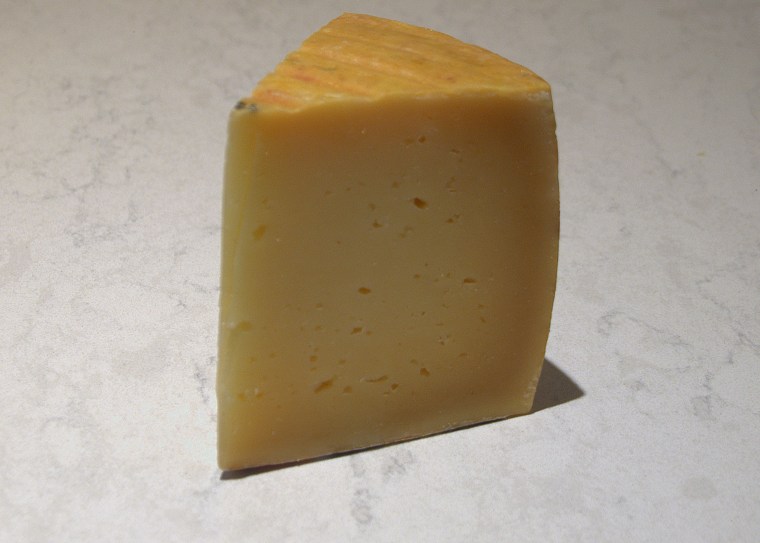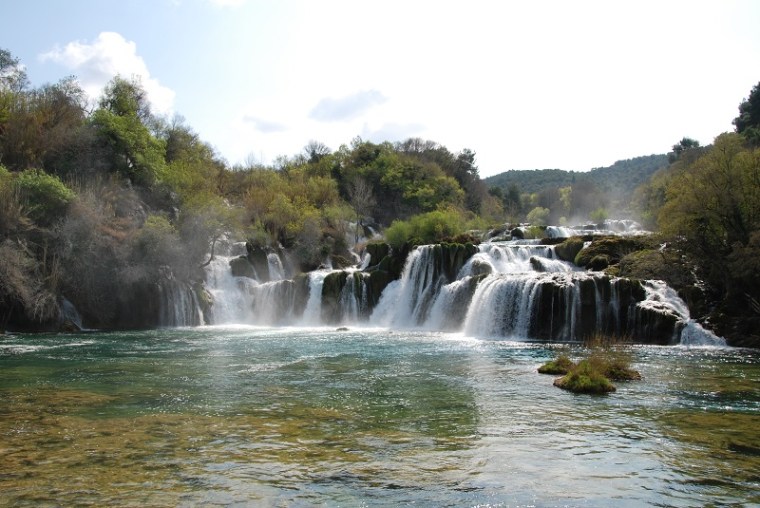
Cheese: Paški Sir
Producer: Sirana Gligora
Where: Kolan, Pag Island, Croatia
So here is a picture of Pag, an island just off the coast of Croatia. There are less than 10,000 people who call the island home, but there are some 40,000 sheep. They’re a little smaller than average, these Paška Ovca, and they are indigenous to the island. From the coastal Velebit Mountains of Dalmatia, the Bora wind barrels down, picks up a lot of salt from the air over the water and drops some of that salty moisture on the pasture where the sheep run around, mostly freely. The herbs and grasses on the island the sheep feast on are pre-salted, if you will, like the grass in coastal Normandy around Issigny, where the best butter in the world comes from. These roaming sheep produce about half a liter of milk a day, so half a quart of milk. That is little, even by sheep standards (half a gallon is sort of average, compared to three quarters of a gallon from a goat and 8 gallons from a cow). Add to that the fact that the sheep are still often milked by hand in the fields where they graze and you have one labor intensive dairy operation going. But at the end of that long laborious process, there is Paški Sir, the cheese from Pag, which wins medals all over the world and makes Croatians proud. Depending on who you believe, the farmers on Pag have been making cheese for hundreds of years (some writers believe since the days of the old Romans) and of course there is the popular suggestion that at one point it was used as currency, which seems a little farfetched. I am sure it may have been a barter unit in some sense, but it is hard to see that someone would buy a cow and say: “I’ll pay you 34 cheeses for that nice animal there”. One way or another, the cheese from Pag has very, very deep roots. Alberto Fortis, an Italian who traveled around Dalmatia in the 18th century wrote about the salt, the sage honey, the wool and the cheese from Pag in his Viaggio in Dalmazia, but by that time, it had already been around for a good long while. The Gligora family has been at it since 1916 and towards the end of the previous century father Ivan and son Šie have begun to take, as they say, the cheese to the next level. Among other things, they send their products all over the world provided you’re happy to pay the rather splendid shipping fees. You may find that is it more prudent to just wait until you travel to Croatia to get some. A competitor, Paška Sirana has an excellent video. Great images, and with English subtitles.

Paški Sir is a cheese that needs a bit of time to unfold in your mouth, don’t eat it hastily. At first, it is what you’d expect from a sheep cheese: it is hard, crumbly and drier than most cow’s milk cheeses. And then, as it melts in your mouth, your tastebuds tell you: “wait, wait, there is more”. I will leave it to experts to give the complex flavors names; I will simply say that there is a lot to savor in an innocent looking piece of Paški Sir, and only if you take your time, will you discover why it gets those accolades the Croatians like to tout. I am sure it tastes great in a variety of dishes, but it is expensive enough that you want to carefully cut it up and eat it with a glass of Croatian red rather than in the mac and cheese from the crockpot. It has a nice crunch – most if it hits the market after aging for about a year so there are the little white protein crystals that lend the cheese even more texture. Shave it on your salad like you would Parmigiano, or eat it with figs – if you can get them, from Dalmatia. Aside from the Paški Sir, I also had a taste of Gligora’s Dinarski Sir, a crumbly, salty cow’s milk cheese from the Dinaric Alps and their Kozlar, a semi-hard goat cheese, also quite salty but very creamy and if fact, I ended up liking it at least as much as the cheese of the week. But I waited until we had left Croatian territorial waters before admitting that aloud. I am sure the Croatians would seriously frown on my preference and I wanted to stay out of trouble.





